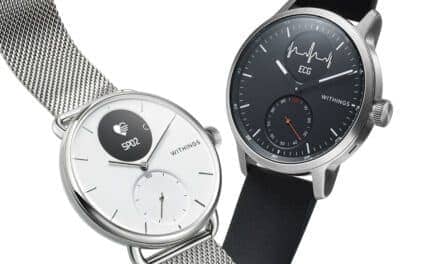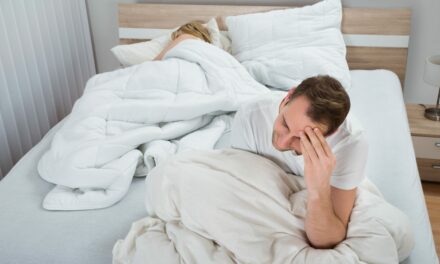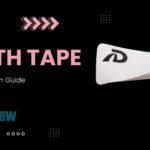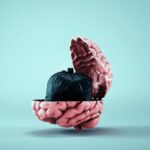From home testing to longitudinal monitoring, sleep rings change how clinicians and patients engage with sleep data.
By Alyx Arnett
Wearable sleep rings are gaining ground, thanks to their comfort, simplicity, and growing clinical utility. US Food and Drug Administration (FDA)-cleared rings are being used not only for diagnostic sleep testing but also for longitudinal monitoring, while consumer rings drive more attention to sleep health.
Companies like SleepImage and Belun Technology market rings cleared for diagnosing obstructive sleep apnea and evaluating sleep stages. SleepImage also has FDA-cleared software for establishing sleep quality, broadening device utility beyond single-night testing. “The ring is conducive for that,” says Patrick Burns, vice president of global sales at SleepImage.
Happy Sleep’s Happy Ring received FDA clearance in October 2024 to monitor health metrics like blood oxygen saturation and pulse rate and, through a partnership with EnsoData, diagnose sleep disorders. Patients can continue to use the ring longer via the company’s member-based monitoring platform.
Meanwhile, wellness enthusiasts are turning to over-the-counter options like the Samsung Galaxy Ring, which entered the market last summer, and Oura Ring, which launched its latest ring, Oura Ring 4, last October. These are meant to be worn continually and provide users with sleep trend data over time.
Lydia Leung, CEO at Belun Technology, sees consumer rings as complementary to FDA-cleared sleep rings. “It brings more patients to sleep doctors, which in turn creates more tests for diagnosis, which in turn allows for prescriptions,” Leung says.
Rings Carve Out a Niche in Sleep Monitoring
The smart rings market continues to grow, with Fortune Business Insights predicting a 29.3% compound annual growth rate from 2025 to 2032.1 This projection is attributed in part to a growing interest in personal health tracking, which Burns has seen accelerate since COVID-19. “People became more cognizant of personal SpO2 devices, or pulse oximeters, that were readily available,” he says.
Leung says that interest, combined with the ring’s discreet and familiar form factor, makes it especially appealing. Since launching last year after receiving FDA clearance in 2023, Belun has generated over 50,000 reports and anticipates matching that this year.
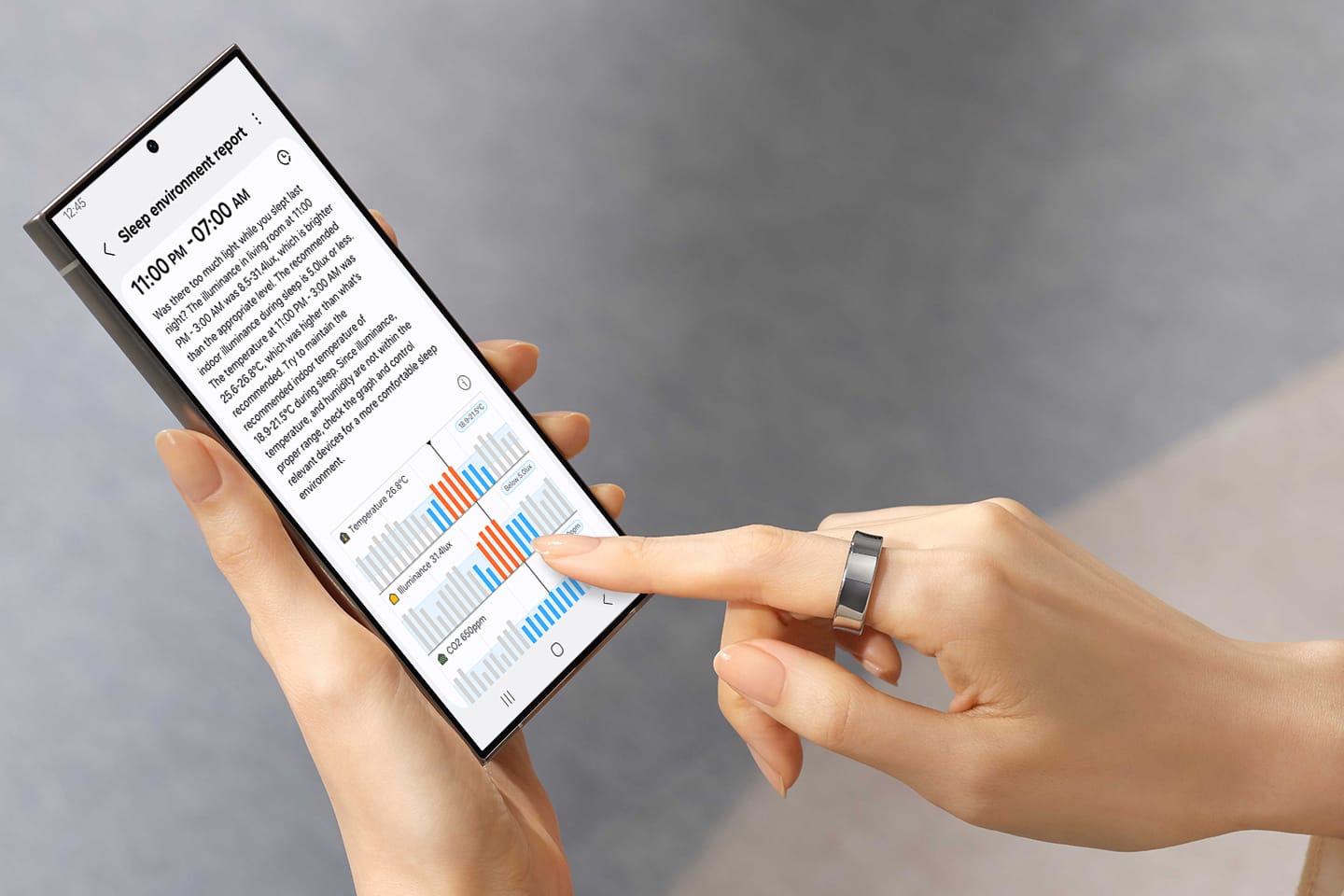
Jeffrey Kim, senior product manager at Samsung Electronics America, sees the ring as a “new, intuitive form factor that makes health tracking effortless and unobtrusive.” He adds, “Its small form factor allows for effortless tracking throughout the day and night, enhancing the accuracy and ease of sleep tracking.”
As more rings—FDA-cleared and otherwise—enter the space, Param Dedhia, MD, who is board-certified in internal, sleep, and obesity medicine, sees the potential of sleep rings to support long-term engagement. “To paraphrase Pearson’s law: ‘Whatever we measure improves. Whatever you repeatedly measure exponentially improves,’” Dedhia says.
The Science Beneath the Band
Sleep rings use sensors on the underside of the band to capture physiological signals from the finger, with most offering insights into heart rate, oxygen saturation, and sleep staging. The primary sensor is photoplethysmography (PPG), while some rings also incorporate accelerometers, as well as sensors for temperature and electrodermal activity.
The finger is a more accurate biomarker source than the wrist due to its higher perfusion index and abundance of arterioles, according to Happy Sleep CEO Dustin Freckleton, MD. Supporting this idea, a study testing the accuracy of Oura Ring Gen3 and two smartwatches—Fitbit Sense 2 and Apple Watch Series 8—versus polysomnography (PSG) found the Oura Ring was, on average, 5% more accurate than Apple Watch and 10% more accurate than Fitbit.2
However, acquiring reliable signals in a ring format can present challenges, says Leung. Smartwatches often benefit from adjustable straps that help ensure sensor contact, which rings typically lack.
To address this, Belun specifically designed six sizes of rings to be worn on the proximal phalanx of the index finger. “We have put very significant effort into how we can have a trade-off on comfortability and usability without affecting the overall accuracy of the ring,” Leung says. Belun ring’s signal has been shown to be adequate in over 90% of patients.3

A comparative study of the Belun ring versus in-lab PSG found the ring detected OSA with good accuracy and demonstrated a moderate-to-substantial agreement in categorizing OSA severity and classifying sleep stages.4 Similarly, the SleepImage ring has shown a strong correlation in the apnea-hypopnea index (AHI) compared to in-lab PSG, along with significant sensitivity, specificity, and overall agreement in detecting and classifying OSA.5
A study of Happy Ring in evaluating sleep continuity and sleep architecture found it compared well with PSG, with “small, nominal differences.”6 The Oura Ring Gen3 also demonstrated good agreement with PSG for global sleep measures, with high sensitivity and specificity for wake/sleep detection.7
“While polysomnography remains the gold standard of sleep assessment, wearable technology offers promise for measuring sleep continuously, less intrusively, and more naturally, making it a more scalable solution for sleep measurement,” says Rebecca Robbins, PhD, a sleep scientist at Brigham and Women’s Hospital, an assistant professor of medicine at Harvard Medical School, a medical advisor for Oura, and first author of the study testing Oura Ring, Fitbit, and Apple Watch.
Expanding Roles for Sleep Rings
With no disposables, rings are conducive to allowing patients to do multi-night testing at a lower expense, says SleepImage’s Burns. This also makes them attractive in adjacent markets—such as otolaryngology and dental sleep—for testing sleep quality and treatment response.
Physicians can enroll their patients in monthly subscription programs with the SleepImage ring, allowing longitudinal measurements of sleep health in response to treatments like blood pressure medications and GLP-1s for weight reduction. Dental sleep practitioners, for example, use rings to speed oral appliance titration using nightly data on AHI and sleep stages. One dentist using the Belun ring for patients on oral appliance therapy reported titrating devices in around a third of the time originally needed, according to Leung.
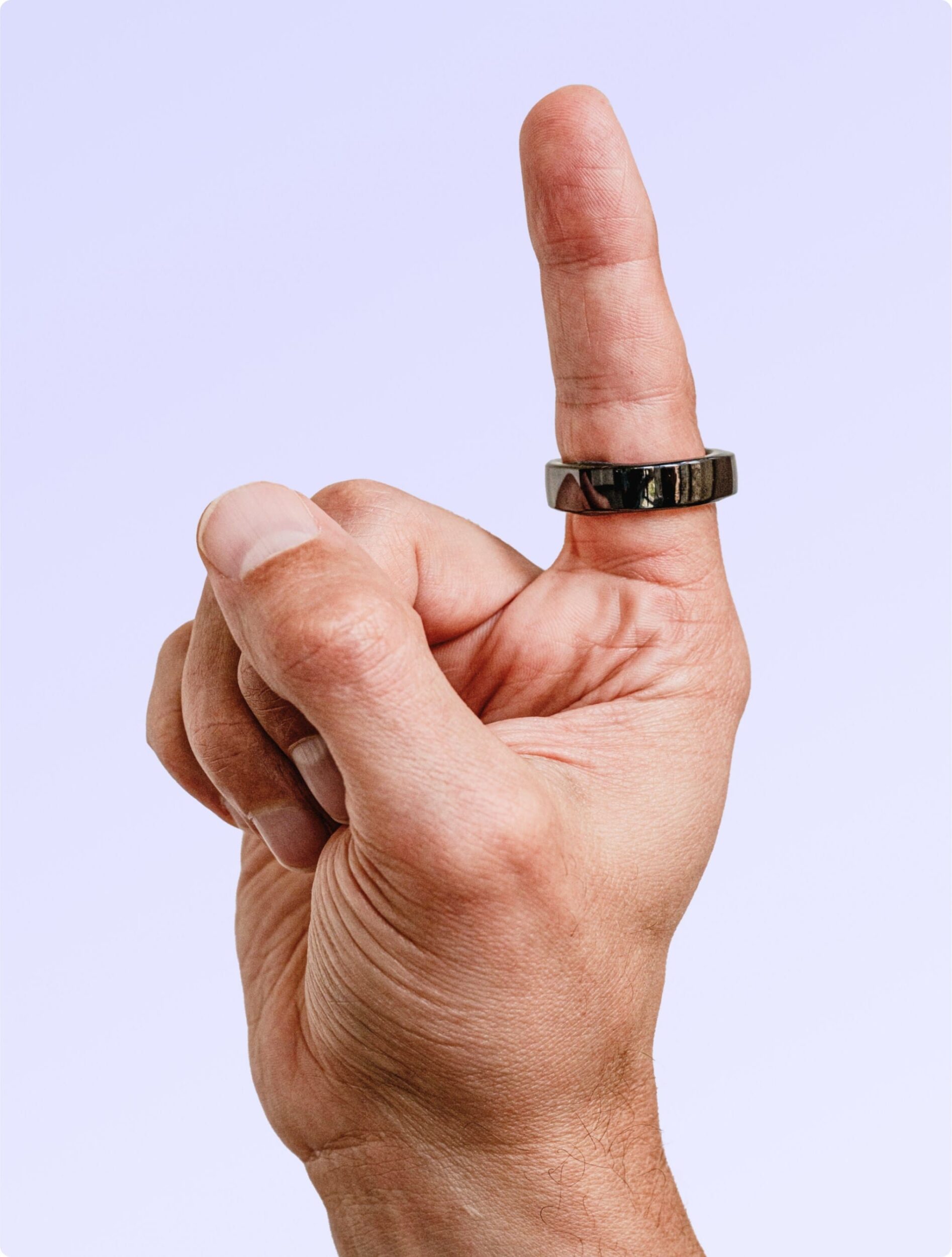
Belun Technology is exploring using its ring with clinical psychologists to evaluate sleep health in mental health patients. “We are also working very closely with clinical psychologists for when they want to understand the sleep architecture,” she says. “If we can help them to improve [patients’] sleep quality, their overall mental health can be much improved.”
At Happy Sleep, after completing a three-night diagnostic test, users can opt to keep their ring as part of a membership program. “We’re moving to a world where total health is promoted in the home. It’s monitored continuously, delivered comprehensively, and done at scale—and that’s something that requires FDA-cleared medical devices integrated with clinical services,” says Freckleton.
Bridging Consumer Awareness and Diagnosis
Sleep physician Dedhia, who runs an integrative executive health program, has clients who use consumer sleep-tracking rings, and he finds the data to be helpful for monitoring trends like heart rate variability, sleep quality, and circadian rhythms. “It gives you a great snapshot into somebody’s daily life,” he says.
Still, he cautions that consumer devices aren’t a substitute for FDA-cleared devices. “How many times I’ve seen people with…seemingly great health with their ring or band, but then they didn’t know they had sleep apnea or some other sleep disorder,” he says. “We’re still trying to see how much does that help us go from that awareness to diagnosis?”
Nate Craft, vice president of sales and marketing at General Sleep, maker of FDA-cleared Zmachine type II home sleep testing devices, echoes this sentiment. While he applauds consumer wearables for boosting awareness and engagement, he says they lack precision and depth. “For complex conditions, the high-fidelity measurements provided by advanced home sleep testing remain indispensable,” Craft says.
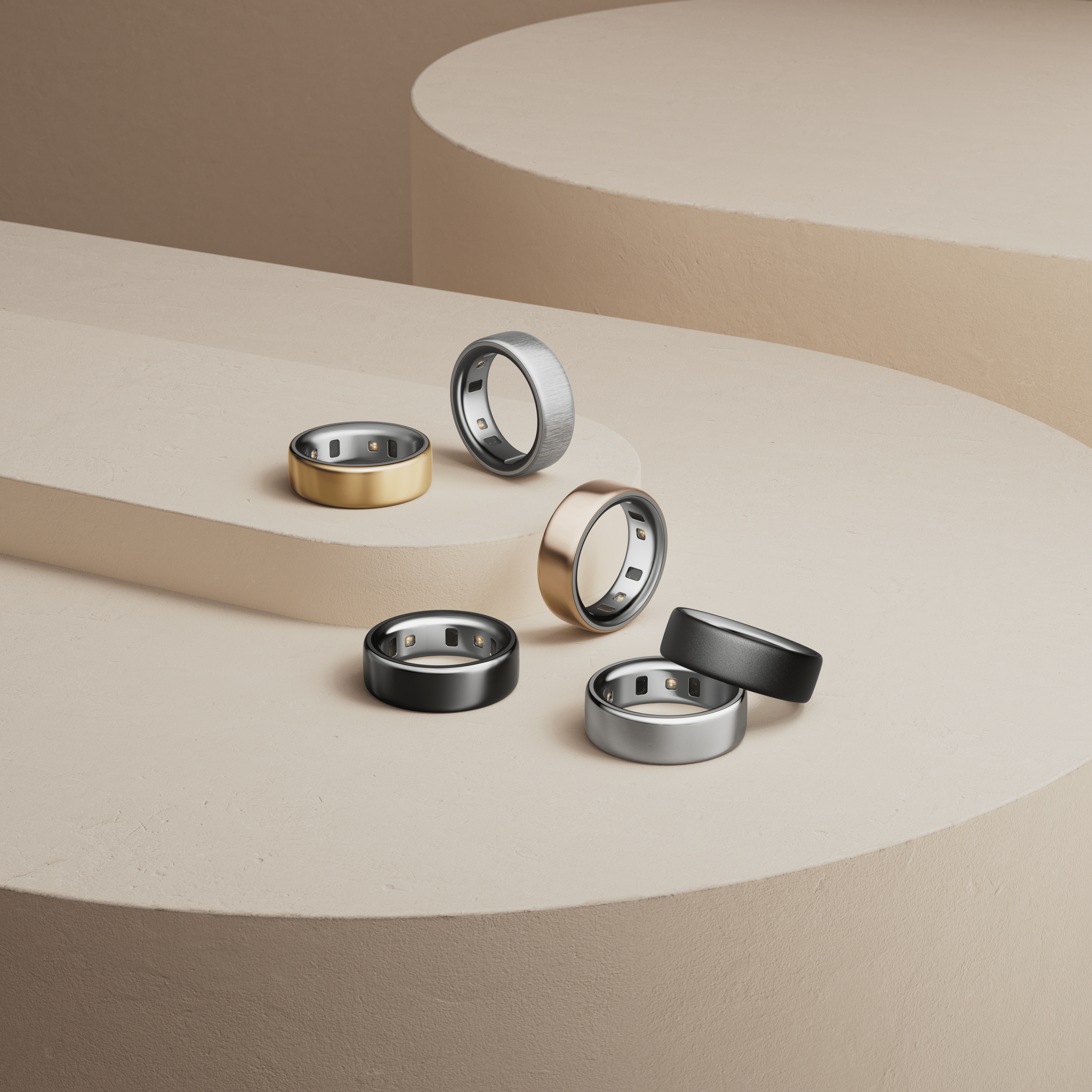
Despite the limitations, Dedhia stresses the importance of embracing patient-generated sleep data in clinical conversations. “Take a pause, be curious about it, and more or less keep talking about it,” he says. “It’s amazing. That person is leaning in with information. You can start having a conversation and agree to keep the conversation going.”
Oura medical advisor Robbins agrees that wearables offer an opportunity to engage patients about sleep health, and she sees consumer rings as a promising tool to help close the gap in awareness and diagnosis.
“It would be exciting to consider a future where providers could have access to wearable data from patients, ascertain their patients’ risk level for a sleep disorder or other health concern, collect additional information through clinical encounters with patients, and provide tailored recommendations,” Robbins says.
References
- Fortune Business Insights. Smart ring market size, share & COVID-19 impact analysis, by application (fitness, wellness, and healthcare), by technology (Bluetooth and NFC), by distribution channel (online and offline), and regional forecast, 2023–2032. Updated 2025 March 3. Available at https://www.fortunebusinessinsights.com/smart-ring-market-111418
- Robbins R, Weaver MD, Sullivan JP, et al. Accuracy of three commercial wearable devices for sleep tracking in healthy adults. Sensors (Basel). 2024 Oct 10;24(20):6532.
- Gu W, Leung L, Kwok KC, et al. Belun Ring platform: a novel home sleep apnea testing system for assessment of obstructive sleep apnea. J Clin Sleep Med. 2020;16(9):1611-7.
- Strumpf Z, Gu W, Tsai CW, et al. Belun Ring (Belun Sleep System BLS-100): Deep learning-facilitated wearable enables obstructive sleep apnea detection, apnea severity categorization, and sleep stage classification in patients suspected of obstructive sleep apnea. Sleep Health. 2023;9(4):430-40.
- Lu M, Brenzinger L, Rosenblum L, et al. Comparative study of the SleepImage ring device and polysomnography for diagnosing obstructive sleep apnea. Biomed Eng Lett. 2023 Jul 17;13(3):343-52.
- Grandner MA, Bromberg Z, Hadley A, et al. Performance of a multisensor smart ring to evaluate sleep: in-lab and home-based evaluation of generalized and personalized algorithms. Sleep. 2023;46(1):zsac152.
- Svensson T, Madhawa K, Nt H, et al. Response to comment on “Validity and reliability of the Oura Ring Generation 3 (Gen3) with Oura Sleep Staging Algorithm 2.0 (OSSA 2.0) when compared to multi-night ambulatory polysomnography: A validation study of 96 participants and 421,045 epochs”. Sleep Med. 2024;117:217-8.
Photo caption: Belun Technology’s FDA-cleared ring is shown in use during sleep.
Photo credit: Belun Technology


